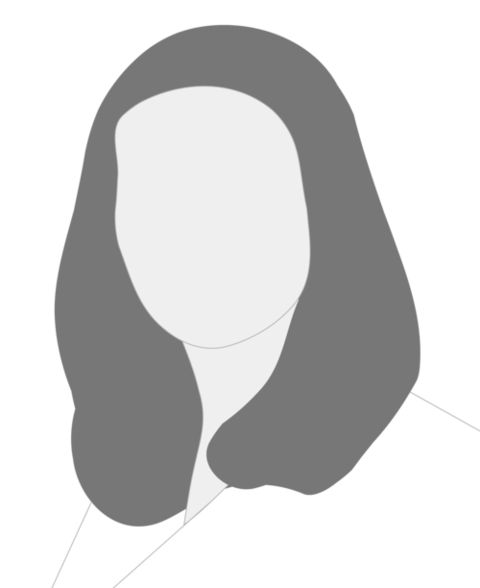Group members

AG Schmidt, Astrid

AG Schmidt, Astrid

AG Schmidt, Astrid

Alumni
Aleksandra Kurova
Masterarbeit "Analysis of different human placental tissues for biopsy system development" 2024
Publications
- Luconi, Michaela, Miguel A. Sogorb, Udo R. Markert, Emilio Benfenati, Tobias May, Susanne Wolbank, Alessandra Roncaglioni, Astrid Schmidt, Marco Straccia, and Sabrina Tait. 2022. Human-Based New Approach Methodologies in Developmental Toxicity Testing: A Step Ahead from the State of the Art with a Feto–Placental Organ-on-Chip Platform. International Journal of Environmental Research and Public Health 19, no. 23: 15828.
- see also Human-Relevant NAMs for Developmental Toxicity Testing in the Scholarly Community Encyclopedia, 2022
- Schmidt A, Schmidt A, Markert UR. The road (not) taken – Placental transfer and interspecies differences. Placenta 115, Nov 2021, Pages 70-77.
- Murrieta-Coxca JM, Aengenheister L, Schmidt A, Markert UR, Buerki-Thurnherr T, Morales-Prieto DM. Addressing microchimerism in pregnancy by ex vivo human placenta perfusion. Placenta. 2022 Jan;117:78-86. PMID: 34773744.
- Fuentes-Zacarías P, Murrieta-Coxca JM, Gutierrez-Samudio RN, Schmidt A, Schmidt A, Markert UR, Morales-Prieto DM: Pregnancy and pandemics: Interaction of viral surface proteins and placenta cells. BBA - Molecular Basis of Disease 2021.
- Heger J, Froehlich K, Pastuschek J, Schmidt A, Baer C, Mrowka R, Backsch C, Schleußner E, Markert UR, Schmidt A, 2018. Human serum alters cell culture behavior and improves spheroid formation in comparison to fetal bovine serum. Exp Cell Res, 365(1):57-65.
- Karolin Fröhlich, Julia I. Heger, Andre Schmidt, Astrid Schmidt, Yvonne Heimann, Amelie Lupp, Rikst Nynke Verkaik-Schakel, Gitta Turowski, Sibylle Loibl, Torsten Plosch, Udo R. Markert, 2018. Effects of breast cancer treatment on placental tissue. Poster and abstract, IFPA 2018 Tokyo conference (International Federation of Placenta Associations).
Research Topics
Project Optobiopsy
Projekt leader: Prof. Udo Markert
Research group leader: Dr. rer. nat. Astrid Schmidt
Dr. rer. nat. José Martin Murrieta Coxca
M.Sc. Priska Streicher
cand. Dr. rer. nat. Johanna Liesa Gollasch
cand. Dr. rer. nat. Leon Philipp
The OptoBiopsie project is funded by the BMWi/ ZIM program (Central Innovation Program for SMEs of the Federal Ministry of Economics and Climate Protection) from 2022-2025. Cooperation partners from industry and universities are the company SQB Ilmenau, the Department of Nanobiosystems Engineering at the TU Ilmenau and the Placenta Lab at the Jena University Hospital.
The human placenta is an ethically uncomplicated organ that is permanently available worldwide and has great potential for use in toxicological studies. The placenta is available as a complete organ ex vivo in a vital state immediately after birth and has the enormous advantage of species specificity compared to numerous animal experiments. The placenta can be used to investigate the toxicity of substances such as drugs, environmental pollutants, cosmetic and food additives or pathogens. The placenta can be used as a whole organ, but for most questions small tissue samples are sufficient and allow larger numbers of tests on a single placenta.
The aim of the project is to standardize and accelerate the collection of these tissue samples using an intelligent optically controlled automated biopsy system so that numerous qualitatively similar samples can be taken from a placenta in a short time so that toxicological tests can be carried out on a large number of highly similar samples after the same ischemia time (time after leaving the body). The project will use artificial intelligence (AI) to develop an automated system based on optical recognition that can identify optimal positions on the surface of the placenta for taking ideal biopsies. The placenta laboratory at the UKJ will provide optical and biochemical data to train the system to develop these services using AI.
We focus to ensure that biopsies of similar tissue types can be taken using surface recognition. The most important distinguishable tissues include fetal arteries, fetal veins, fetal villous trunks and intervillous space with floating terminal villi. In this way, a selection could be automated, but also expanded to include aspects that would not be possible by eye alone. Subsequent toxicological tests would thus be based on very similar tissue samples and could be standardized at different locations.
Former employees and students:
Pharmacist cand. Dr. rer. nat. Rachel Zabel (2022)
Master's student Aleksandra Kurova (2023)
IZKF project: Induction of senescence on vessel explants of the human placenta in long-term culture
cand. Dr. med. Johanna Liesa Gollasch
supervisor: Dr. rer. nat. Astrid Schmidt
funded as part of the IZKF doctoral scholarship 2024/ 2025
Pregnant mothers in Germany are older on average at the birth of their child than they were 30 years ago (1991: 27.9 years; 2022: 31.7 years) [1]. The risk of cancer increases with age and during pregnancy [2]. The diagnosis is then usually made at an advanced stage of the disease with an increased risk of mortality, so that chemotherapy is usually started immediately. As with non-pregnant patients, treatment is carried out with taxanes such as docetaxel, which is often used in therapy due to its relatively acceptable safety profile. [3]
In human perfusion models, a low transplacental transfer rate of less than five percent was found for the cytostatic drug docetaxel [2]. This means, however, that the fetal blood vessels also come into contact with docetaxel. Possible effects on the vessels are still unclear. Consequently, it is relevant to determine whether and to what extent docetaxel induces possible dysfunction and senescence in the endothelium of the fetal vessels.
For this background, senescence and dysfunction in explants from arteries and veins of the fetal side of the placenta will be investigated in 14-day long-term culture. The induction of senescence will be investigated using multiplex immunofluorescence staining and qPCR by localizing and detecting senescence markers in the vascular explants during and after culture. An MTS cell viability assay as well as various hormone and inflammatory marker analyses are planned to check the viability.
references:
[1] Average age of mothers and fathers at the birth of a child in Germany from 1991 to 2022 2023; Available from: https://de.statista.com/statistik/daten/studie/1180171/umfrage/durchschnittliches-alter-der-muetter und-vaeter-bei-der-geburt-in-deutschland/.
[2] Berveiller, P. and O. Mir, Taxanes during pregnancy: probably safe, but still to be optimized. Oncology, 2012. 83(4): p. 239-40.
[3] Froehlich, K., et al, Breast cancer, placenta and pregnancy. Eur J Cancer, 2019. 115: p. 68-78.
IZKF project: Senescence in the model human placenta explants
"Studies on the induction and delay of senescence in the human placenta explants model (keyword: therapy-induced senescence, TIS)"
cand. Dr. med. Emily Könnecke
supervisor Dr. rer. nat. Astrid Schmidt
funded by IZKF 2023
The placenta laboratory offers the special opportunity to cultivate placentas in vitro directly after birth and thus to study a human model system. For this purpose, explants are cultivated over a period of up to two weeks under various conditions. It is known that the syncytiotrophoblast (STB) initially degenerates in the first few days and can then be functionally reconstituted by the cytotrophoblast (CTB) (1,2). Chuprin, 2013, showed that the STB, in contrast to the CTB, shows both phenotype and markers for senescence. The degeneration and regeneration of the STB from the CTB in culture is therefore subject to senescence processes, which should be investigated with the focus on the extent to which the senescence of the placental villi can be inhibited or induced. For this purpose, explants will be cultivated under different conditions with regard to induction and inhibition and the tissue will be examined for senescence markers. Immunohistochemical staining, vitality and hormone analyses as well as electron microscopic examinations of the transformation of mitochondria as markers for senescence are planned. PCR analyses for senescence markers in tissue and in extracellular vesicles from culture supernatants are also planned.
- Simán CM, Sibley CP, Jones CJP, Turner MA, Greenwood SL. 2001. The functional regeneration of syncytiotrophoblast in cultured explants of term placenta. American Journal of Physiology Regulatory, Integrative and Comparative Physiology, 280(4):R1116-R1122.
- Schulz (2019) Optimierung der 14-tägigen Kultivierung von humanen Plazenta Explantaten mit anschließendem Toxizitäts-Assay (Masterarbeit, Placenta-Labor)
- Chuprin A, Gal H, Biron-Shental T, Biran A, Amiel A, Rozenblatt S, Krizhanovsky V. 2013. Cell fusion induced by ERVWE1 or measles virus causes cellular senescence. Genes & Development, 27(21):2356-2366.
JSAM project: Senescence in endometrium
Investigation of uterine NK-cells and age in the infertile endometrium
cand. Dr. med. Anne-Christin Wrzal
supervisor Dr. rer. nat. Astrid Schmidt
funded by JSAM 2021/ 2022
Uterine Natural Killer (uNK) cells in the endometrium are required for successful implantation and placentation. In contrast to cytotoxic peripheral blood NK cells endometrial uNKs are immunoregulatory [1]. Nevertheless, patients with fertility problems show lower or higher uNK cell concentration compared to a mid range in fertile women [2]. The aim of this study is to determine, whether indications of senescence can be found in the endometrium of patients with Recurrent Implantation Failure (RIF) and if so whether the expression of this senescence markers is associated with the age of the patient and/or the uNK cell concentration. The number of CD56+ uNK cells, CD138+ plasma cells and CD16+ cells as well as the expression of the senescence markers p16 and DIO2 were assessed by immunohistochemistry in endometrial biopsies from 63 RIF patients and 10 healthy controls (day 19-22). Pathologic and CD138 positive patients were excluded. An exemplary proteome analysis was performed using mass spectroscopy by using the eFASP method. Multiplex staining was performed to visualise the spacial relationships between the markers p16, DIO2, CD56, CK AE1/AE3 and CD31. Initial analyses show increased expression of senescence markers in RIF patients compared to healthy controls. In the groups with high uNK cell counts (>300 cells/mm2 ), a higher senescence marker expression was found than in the group with low concentrations (<100 cells/mm2). This findings will be validated by further data analysis of this study.
[1] S. Farag, M.A. Caligiuri, Human natural killer cell development and biology, Blood Rev 20(3) (2006) 123-37.
[2] Chiokadze, C. Bär, J. Pastuschek, B.V. Dons'koi, K.G. Khazhylenko, E. Schleussner, U.R. Markert, R.R. Favaro, Beyond Uterine Natural Killer Cell Numbers in Unexplained Recurrent Pregnancy Loss: Combined Analysis of CD45, CD56, CD16, CD57, and CD138, Diagnostics (Basel) 10(9) (2020).
Multiplex staining of human placenta explants after tox assays
Master student: Karthika Muthuraj
Multiplex analysis of human placenta explants after long-term culture in different heavy metals.


